Are you interested in planting vegetables that will be ready to harvest all fall this year no matter where you live?
Are you unsure what the perfect type of vegetable is to plant for a fall garden?
Or do you just want to plant easy and quick vegetables that require little care?
If so, then you’ll love Best Fall Garden Vegetables for Beginners
And if you continue to scroll you’ll even learn about the best ways to plant your vegetables and what to look for when buying vegetable seeds and plants!
[toc]
1. Lettuce
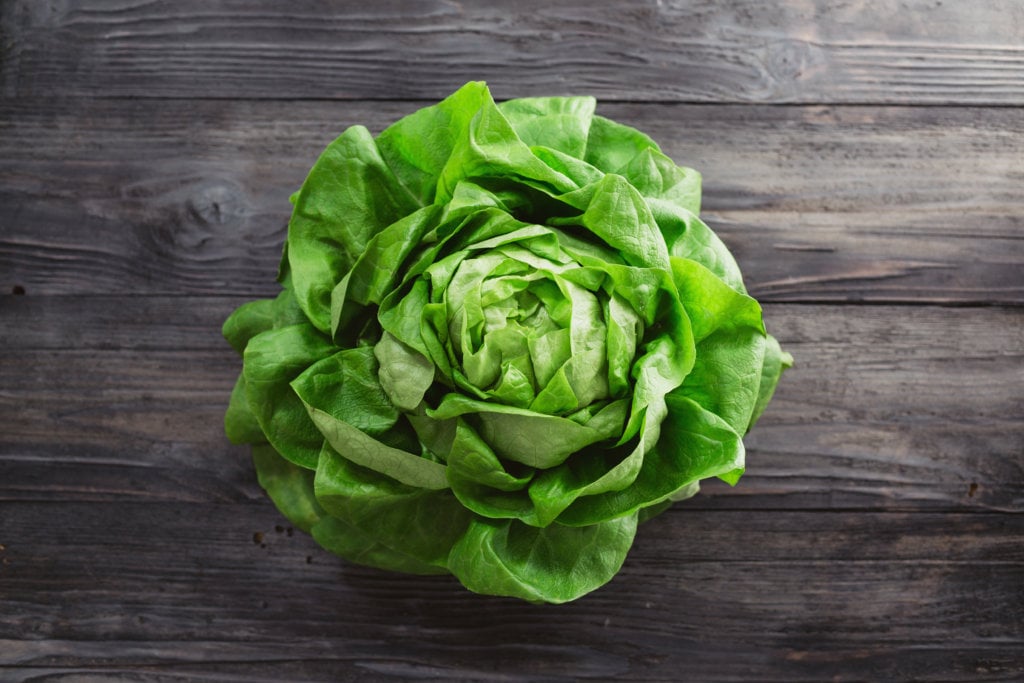
- USDA Hardiness Zone: 4 to 9
- Soil pH: 6.0 to 7.0
- Maintenance Level: Low
- Light: Partial Sun
- Varieties: Butterhead, Leaf, Romaine
Begin planting lettuce 4 – 8 weeks before the first frost. It grows best in weather between 45 degrees to 75 degrees Fahrenheit.
Lettuce is an incredibly easy vegetable to plant for a fall garden because it requires minimal watering, sunlight, and care.
You can plant lettuce in pots, traditional garden, raised garden beds, and even indoors!
2. Kale
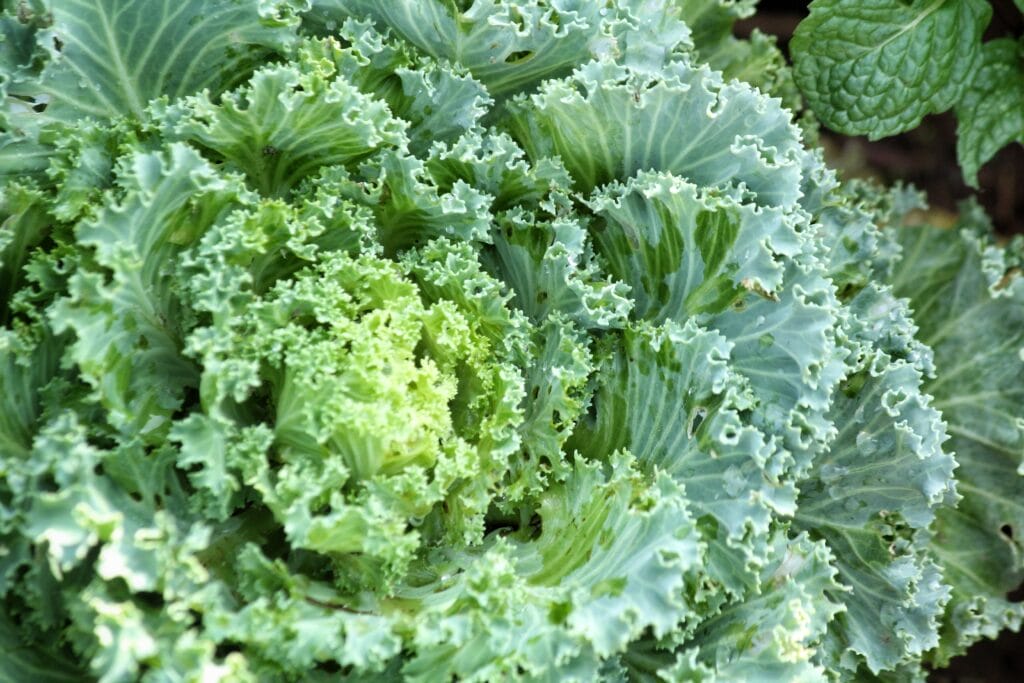
- USDA Hardiness Zone: 8 to 10
- Soil pH: 6.4 to 6.8
- Maintenance Level: Low
- Light: Partial Sun
- Varieties: Curl, Red Russian, Chinese
Begin planting kale 6 – 8 weeks before the first frost. It grows best in weather between 45 degrees to 75 degrees Fahrenheit.
Kale is another easy vegetable to plant for a fall garden because it requires minimal watering, sunlight, and care. And best of all is that you can grow it through most of the fall.
You can plant kale in pots, traditional gardens, raised garden beds, and even indoors!
3. Collard Greens
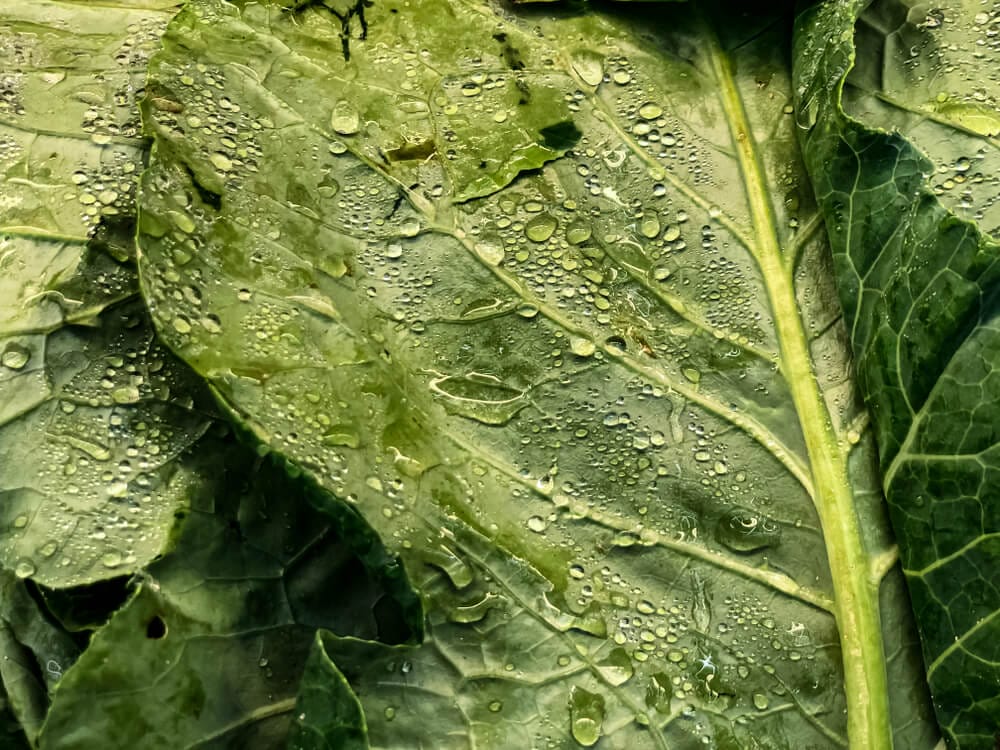
- USDA Hardiness Zone: 8 to 10
- Soil pH: 6.5 to 7.5
- Maintenance Level: Low
- Light: Partial Sun
- Varieties: Blue Max, Top Bunch, Butter Collard
Begin planting collard greens 6 – 8 weeks before the first frost. This type of vegetable is the coldest hardy plant on this list. You can literally grow it throughout winter.
Collard Greens are easy vegetables to plant in the fall because they require only partial sunlight. It should be noted that they do “eat” a lot, so you will need to apply fertilizer once a season to them.
- Related: Best Garden Fertilizer
You can plant collard greens in pots, traditional gardens, raised garden beds, and even indoors! If you do plant them in a raised garden bed, make sure there is partial sunlight in the winter!
4. Arugula
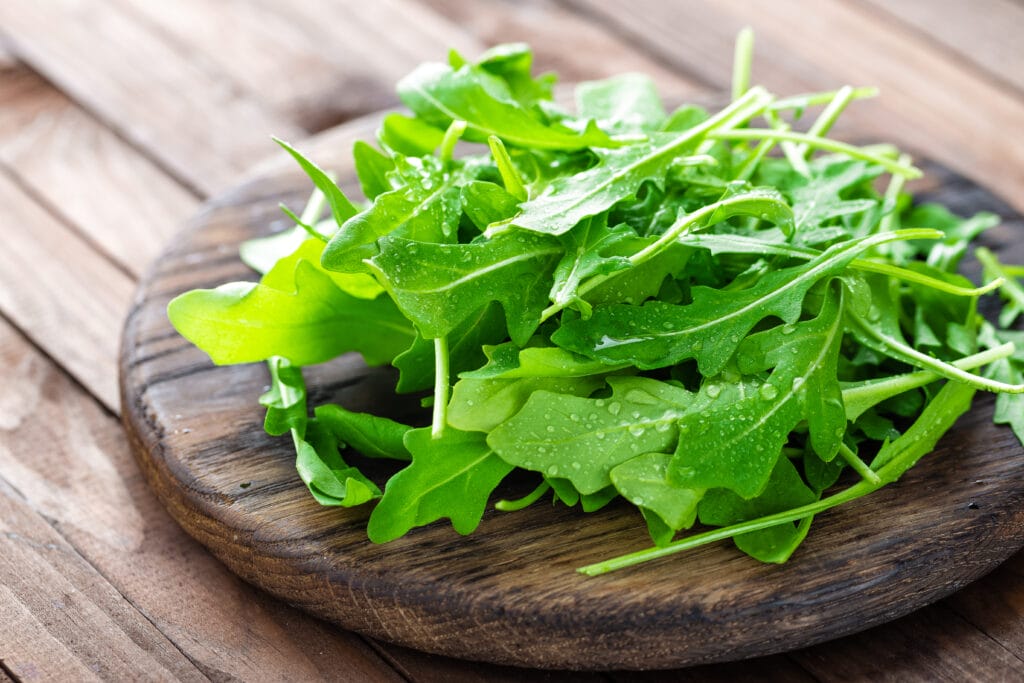
- USDA Hardiness Zone: 3 to 11
- Soil pH: 6.0 to 7.0
- Maintenance Level: Low
- Light: Partial Sun
- Varieties: Rocket, Italian
You should plant your Arugula 30-40 days before you are ready to harvest it. In addition, consider planting it every 2 weeks for a consistent harvest in the fall.
Arugula is perfect for cooler weather since it bolts in the heat, but cannot survive heavy snow or freezing temperatures. If you want to grow it throughout winter then add a thick level of mulch.
You can plant arugula in pots, traditional gardens, raised garden beds, and even indoors! Plant them in containers or raised garden beds if you want to grow them longer!
5. Spinach
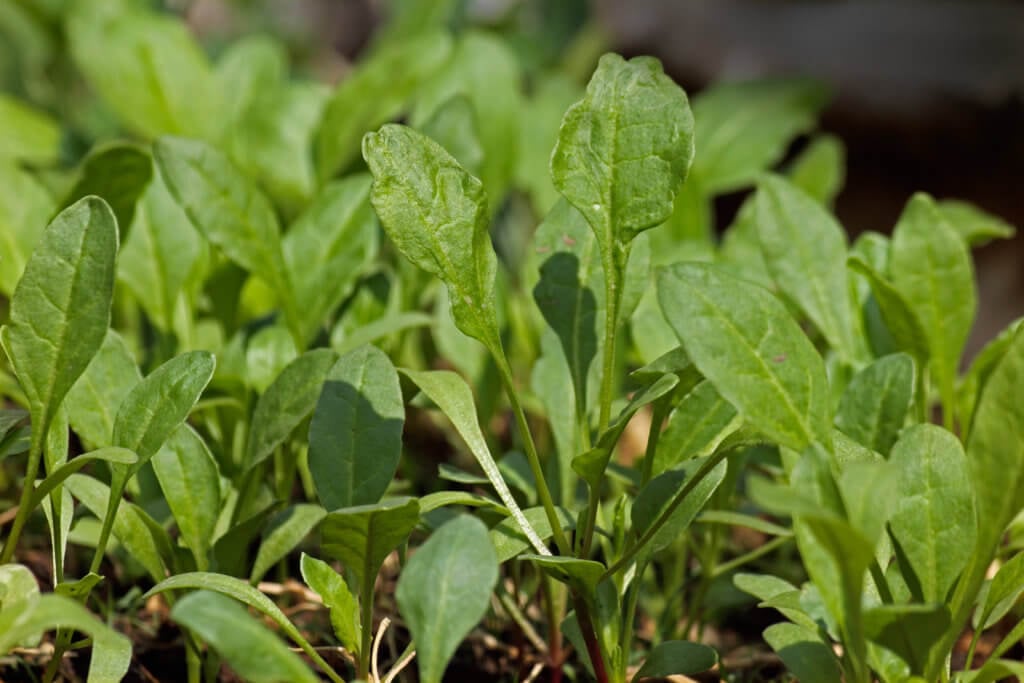
- USDA Hardiness Zone: 2 to 9
- Soil pH: 6.0 to 7.0
- Maintenance Level: Low
- Light: Full Sun
- Varieties: Flat, Semi Savoy, Savoy
You should plant your Spinach 4 – 8 weeks before the first frost. This is one of the few plants that can continue to grow in cold winters.
In order to have your Spinach last longer in the fall then I recommend harvesting your vegetable from the outer leaves first. This will promote more growth, longer.
You can plant spinach in pots, traditional gardens, raised garden beds, and even indoors! Plant them in containers or raised garden beds if you want to grow them longer!
6. Swiss Chard
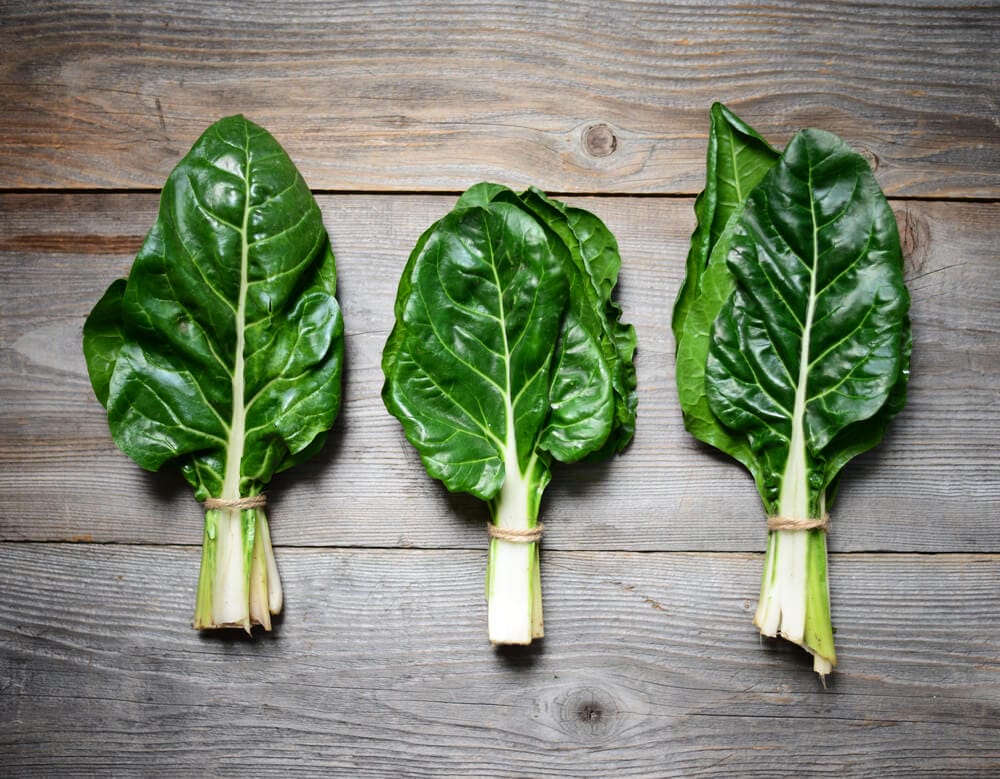
- USDA Hardiness Zone: 6 to 10
- Soil pH: 6.0 to 6.4
- Maintenance Level: Low
- Light: Partial Sun
- Varieties: Bright Light, Bright Yellow, Ruby
You should plant your Swiss Chard 10 weeks before the first frost. This is a vegetable that will taste great in early fall but cannot survive winter.
Swiss Chard is one of the few vegetables on this list that can grow in partial sun and in full-sun. Start seedlings 4 weeks before transplanting outside.
You can plant swiss chard in traditional gardens and raised garden beds.
7. Broccoli

- USDA Hardiness Zone: 3 to 10
- Soil pH: 6.0 to 6.8
- Maintenance Level: Low
- Light: Full Sun
- Varieties: Broccoli, Broccolini, Chinese Broccoli
Broccoli is one of the few vegetables that take the longest time to mature and should be planted 100 days before you are ready to harvest it in the fall.
Broccoli requires full-sun, lots of water, and can only be harvested once. But it is also a very cold-hardy plant.
You can plant Broccoli in traditional gardens and raised garden beds.
8. Brussel Sprouts
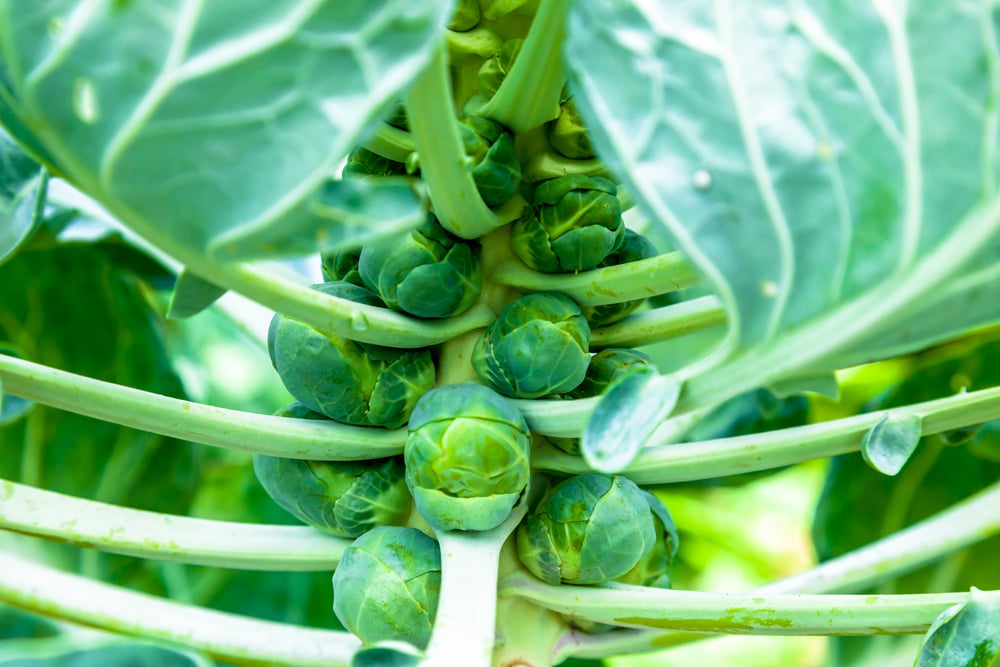
- USDA Hardiness Zone: 2 to 9
- Soil pH: 6.0 to 7.5
- Maintenance Level: Low
- Light: Full-Sun
- Varieties: Diablo, Dimitri
Brussel Sprouts should be planted 100 days before you are ready to harvest them in the autumn. This vegetable is one of the few that you can directly sow into the ground too.
An expert tip for beginner gardeners is to wait until the first frost to harvest your Brussel sprouts because they will become more flavorful.
Brussel Sprouts are perfect for cooler weather areas and can survive snow and cold temperatures. They are also perfect for any type of garden.
9. Cauliflower

- USDA Hardiness Zone: 2 to 11
- Soil pH: 6.0 to 7.0
- Maintenance Level: Low
- Light: Full-Sun
- Varieties: White, Green, Purple
Cauliflower should be started 12 weeks before full harvest and is one of the few fall vegetables that require at least 6 – 8 hours of direct sunlight.
Cauliflower is one of the most complex vegetables to grow. They do not survive heat very well and can quickly die with cold temperatures.
You can plant Cauliflower in traditional gardens and raised garden beds, but make sure they get lots of water.
10. Kohlrabi
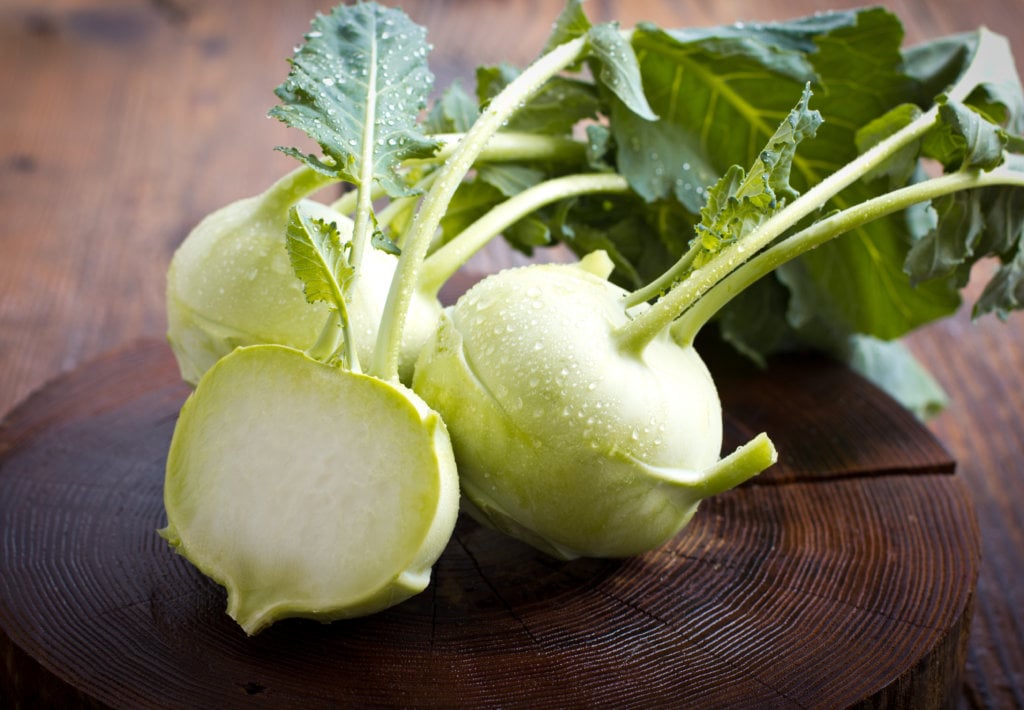
- USDA Hardiness Zone: 2 to 11
- Soil pH: 5.5 to 6.9
- Maintenance Level: Low
- Light: Partial Sun
- Varieties: Green, Purple, White
Kohlrabi is another great vegetable to plant for a fall garden. You should start it your kohlrabi 6 – 10 weeks before you are ready to harvest it.
Kohlrabi is hardy to warm weather, can survive cold weather, and is one of the quickest vegetables to you harvest.
Because of this you can plant your kohlrabi in raised garden beds, traditional gardens, and even in deep containers.
11. Onions
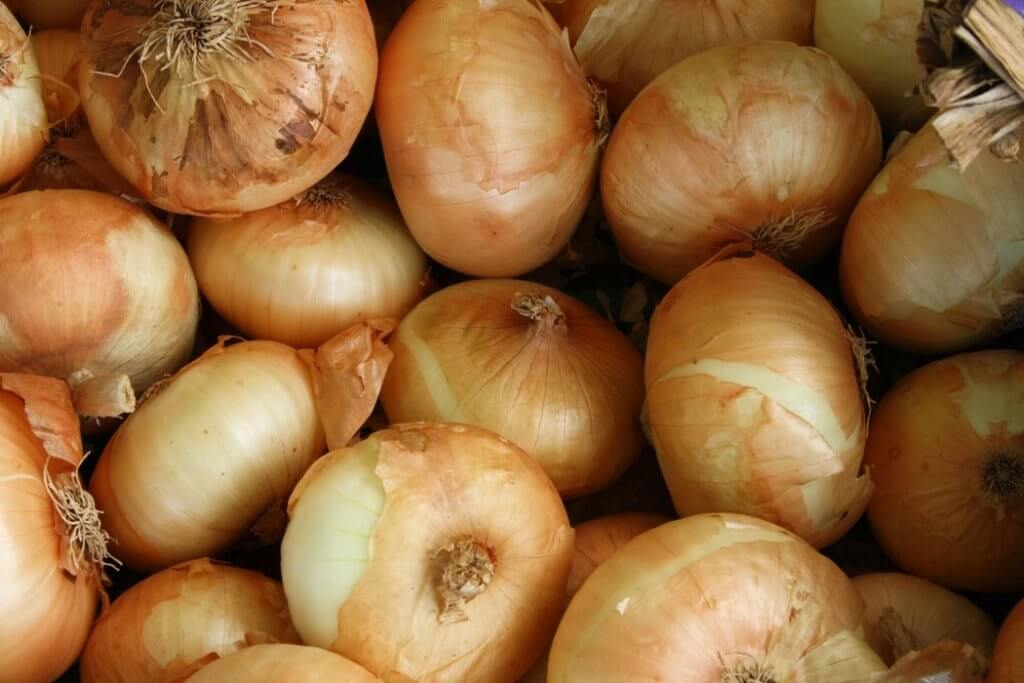
- USDA Hardiness Zone: 5 to 8
- Soil pH: 5.3 to 5.8
- Maintenance Level: Low
- Light: Full Sun
- Varieties: White, Green, Potato
Onions should be planted 8 weeks before you are ready to harvest. And it is one of quickest plants to harvest, so you can plant it in intervals for the best harvest.
Onions require full-sun, little water, and does well in heat and cold!
Onions can be planted almost anywhere like raised garden beds, traditional gardens, containers, and even hanging baskets.
12. Cabbage
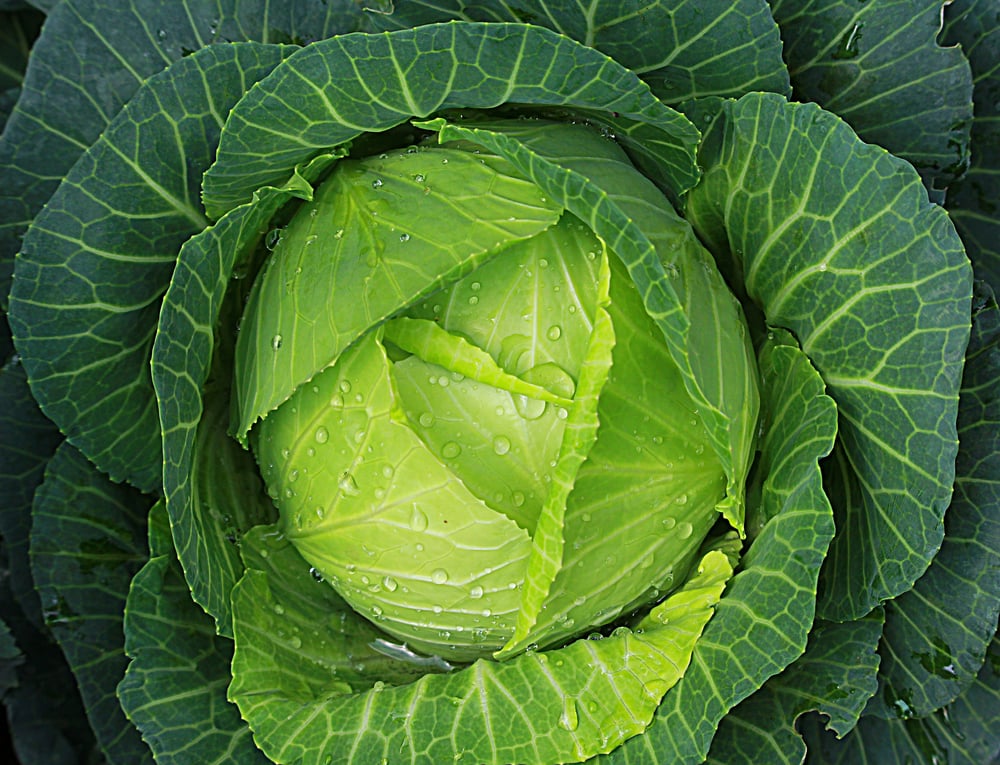
- USDA Hardiness Zone: 1 to 9
- Soil pH: 5.2 to 6.8
- Maintenance Level: Low
- Light: Full Sun
- Varieties: Pointed White, Red
Cabbage is another complex vegetable to grow. It takes 10 weeks to grow before fall harvest and is prone to pests.
Cabbage requires full-sun, lots of water, and can only be harvested once.
You can plant cabbage in traditional gardens and raised garden beds.
13. Turnips

- USDA Hardiness Zone: 2 to 9
- Soil pH: 6.0 to 6.5
- Maintenance Level: Low
- Light: Partial Sun
- Varieties: Brassica
If you need to plant a vegetable on short notice then look at the turnip. It only requires 2 months of growth before harvested and can be planted in the shade.
Turnips can be harvested in late fall and even in early winter if you mulch around it.
You can plant Turnips in traditional gardens, containers, and raised garden beds.
14. Beets

- USDA Hardiness Zone: 2 to 11
- Soil pH: 5.3 to 6.2
- Maintenance Level: Low
- Light: Partial Sun
- Varieties: Common, Red, Sugar
Beets are another great vegetable to plant and can be harvested 12 weeks after sowed. This type of vegetable is also best eaten when they are smaller instead of larger.
Beets are cold-hardy, do not require much care, and require very little space in your garden.
You can plant Broccoli in traditional gardens, containers, and raised garden beds.
15. Radishes

- USDA Hardiness Zone: 2 to 10
- Soil pH: 6.0 to 7.0
- Maintenance Level: Low
- Light: Partial Sun
- Varieties: Red, Pink, Yellow
Radishes are the quickest plant to harvest vegetables for your fall garden. It only takes 4 weeks to harvest!
This type of vegetable is cold hardy and there are numerous winter varieties you can grow.
You can plant radishes in traditional gardens, containers, and raised garden beds.
16. Green Beans
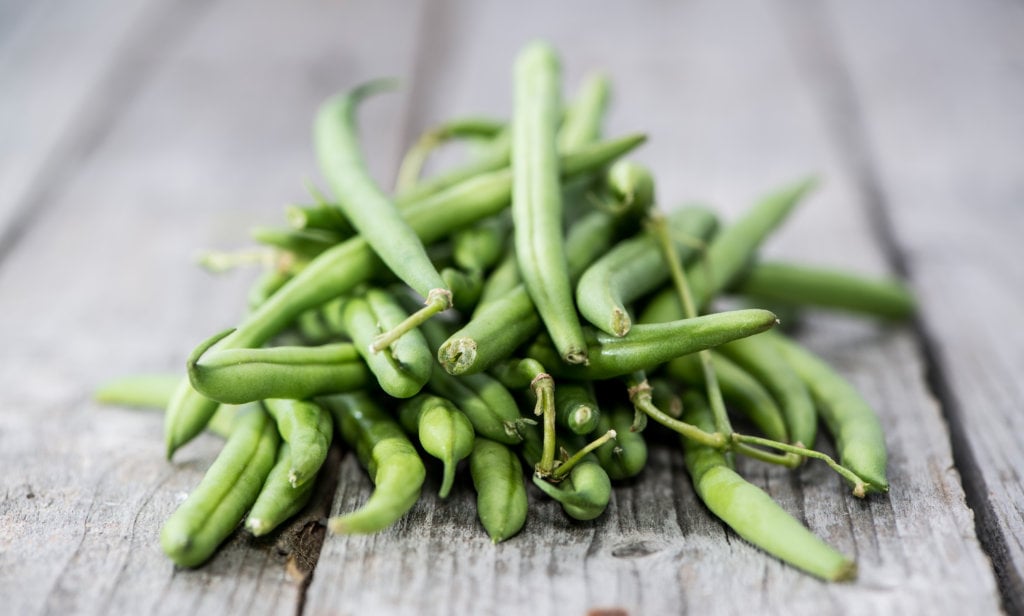
- USDA Hardiness Zone: 3 to 10
- Soil pH: 5.0 to 6.5
- Maintenance Level: Low
- Light: Full Sun
- Varieties: Green, Lima, Wax, Purple
Greens Beans are one of my favorite vegetables to grow and are one of the best fall garden vegetables. You should plant them 60 days before you are ready to harvest them.
Green Beans do require full-sun, lots of water, pest control, and do not survive heat well, but they are worth the work.
You can plant Green Beans in traditional gardens, containers, and raised garden beds.
- Related: Easy Vegetables to Grow in Pots
17. Peas
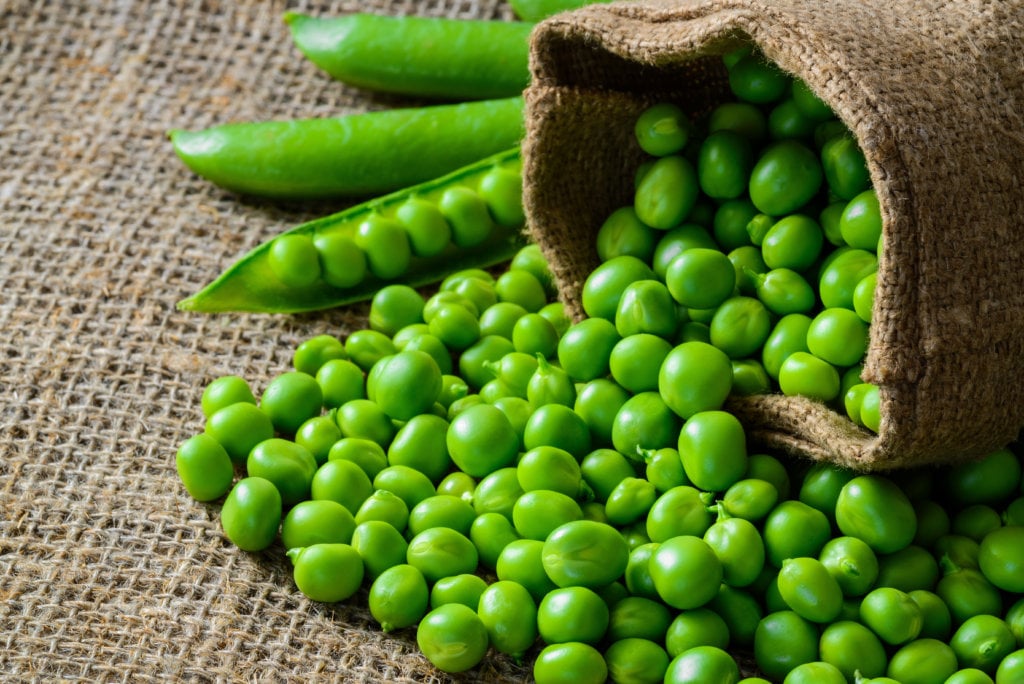
- USDA Hardiness Zone: 2 to 9
- Soil pH: 5.8 to 6.4
- Maintenance Level: Low
- Light: Full Sun
- Varieties: English, Snow, Snap
Peas are one of the favorite vegetables to grow and eat by gardeners around the world. This type of vegetable is great to plant in the spring, summer, and even fall.
Plant Peas 90 days before you want to harvest them, are cold-hardy, and have extra flavor when a light frost happens.
You can plant Broccoli in traditional gardens and raised garden beds.
18. Sweet Potatoes
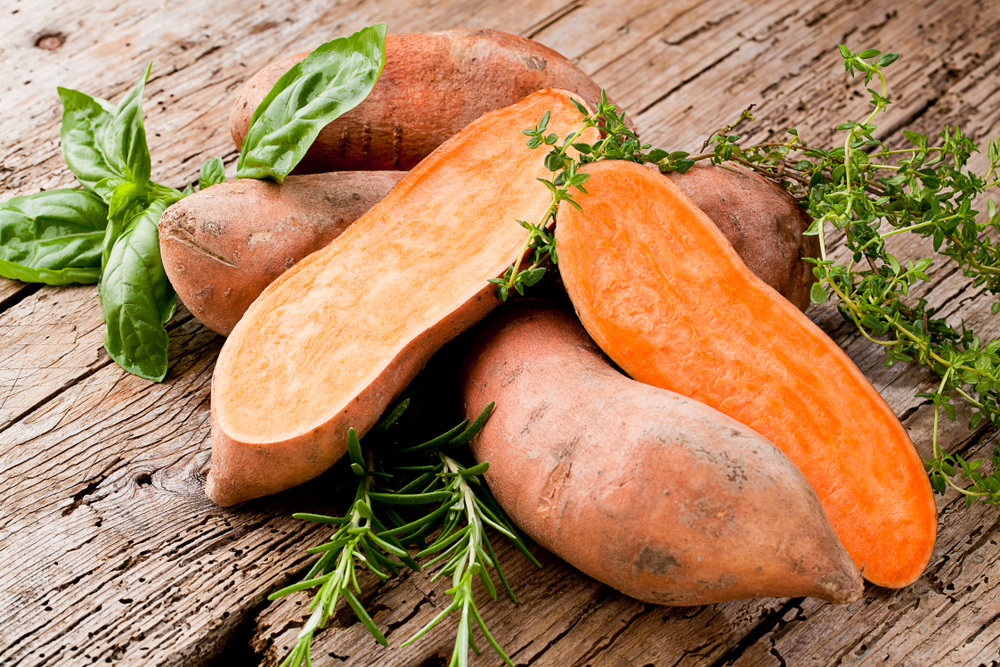
- USDA Hardiness Zone: 9 to 12
- Soil pH: 5.3 to 5.6
- Maintenance Level: Low
- Light: Full Sun
- Varieties: Sweet Potato & Yams
Sweet Potatoes is one of the few vegetables to grow in the spring for a fall harvest. But it is also one of the best fall garden vegetables to grow and eat. You should plant them 6 months before harvest.
Sweet Potatoes requires full-sun, lots of water, and can only be harvested once. But it is also a very cold-hardy plant.
You can plant sweet potatoes in traditional gardens.
19. Potatoes

- USDA Hardiness Zone: 3 to 9
- Soil pH: 5.6 to 6.0
- Maintenance Level: Low
- Light: Full Sun
- Varieties: Yukon, Ratte, Dore
Potatoes are one of the few vegetables to grow in the spring for a fall harvest. But it is also one of the best fall garden vegetables to grow and eat. Potatoes should be planted 6 months before harvesting.
Potatoes requires full-sun, lots of water, and can only be harvested once. But it is also a very cold-hardy plant.
You can plant potatoes in traditional gardens, but they do take up a lot of space.
20. Carrots
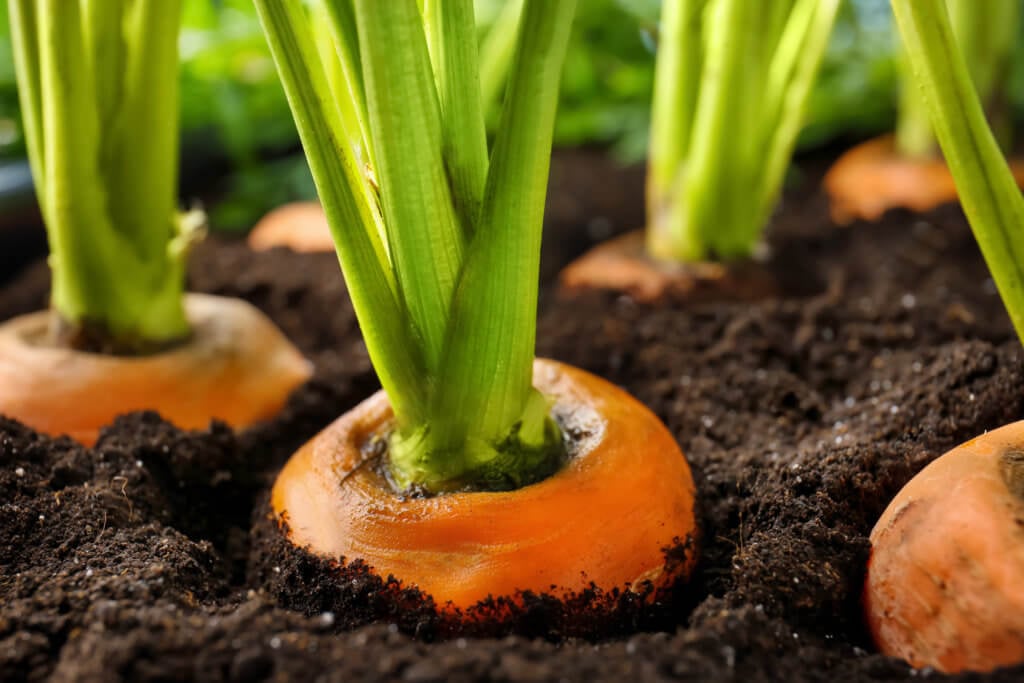
- USDA Hardiness Zone: 3 to 10
- Soil pH: 5.6 to 6.0
- Maintenance Level: Low
- Light: Full Sun
- Varieties: Orange, Black, Rainbow
Carrots are another vegetable that takes a long time to grow but do not take much space in your garden. Begin planting carrots in late spring or early summer.
Carrots require full-sun, lots of water, and can only be harvested once. But it is also a very cold-hardy plant.
You can plant Carrots in traditional gardens and raised garden beds.
Frequently Asked Questions (5 Questions)
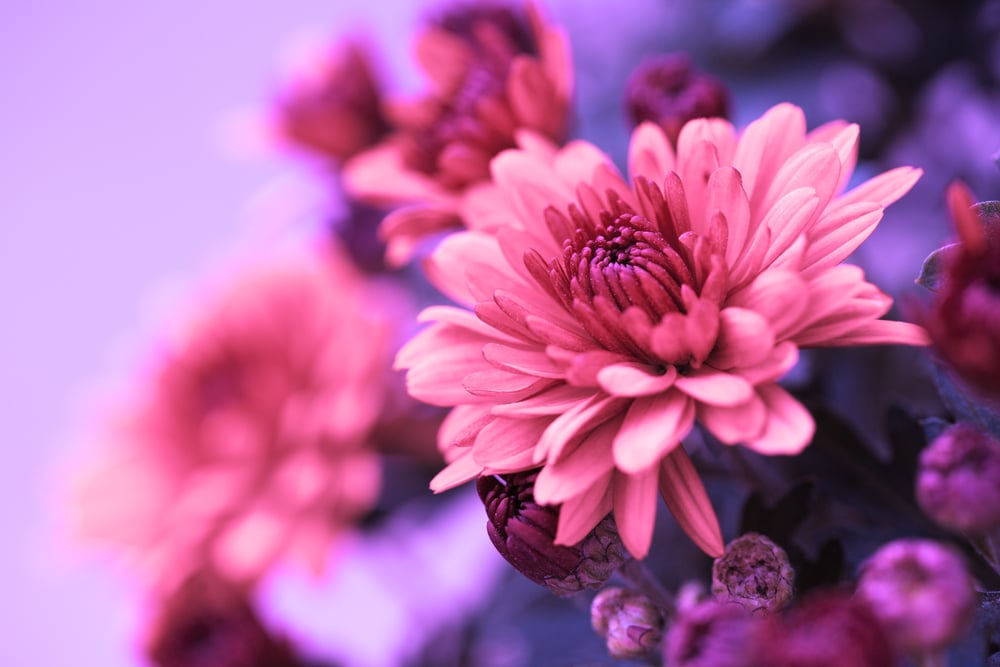
1. How Do I Plant Fall Vegetables?
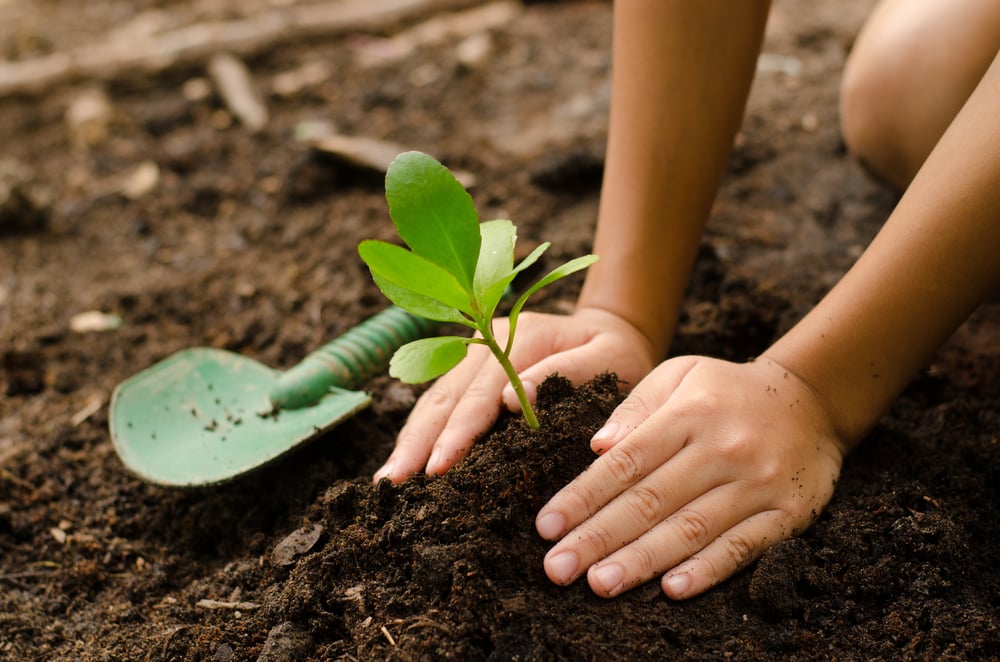
Planting Fall Vegetables is relatively easy.
Assuming you are just planting a vegetable plant all you need to do is dig a hole approximately 8 to 12 inches deep.
Then apply a cup of vegetable garden soil. Place your vegetable plant into the hole. Then cover it with your soil.
Next, apply vegetable fertilizer and water it for 15-20 seconds. Once a week you will want to water your flowers if they do not receive rain.
If you are planting vegetable seeds you will want to follow any of the how to articles on thegardeningdad.com.
For Beginner Gardeners, I recommend not planting vegetable seeds as they take too much time, effort, and money. And the success rate on growing vegetables from seeds is not as good as grown plants.
2. When Do I Plant Fall Vegetables?
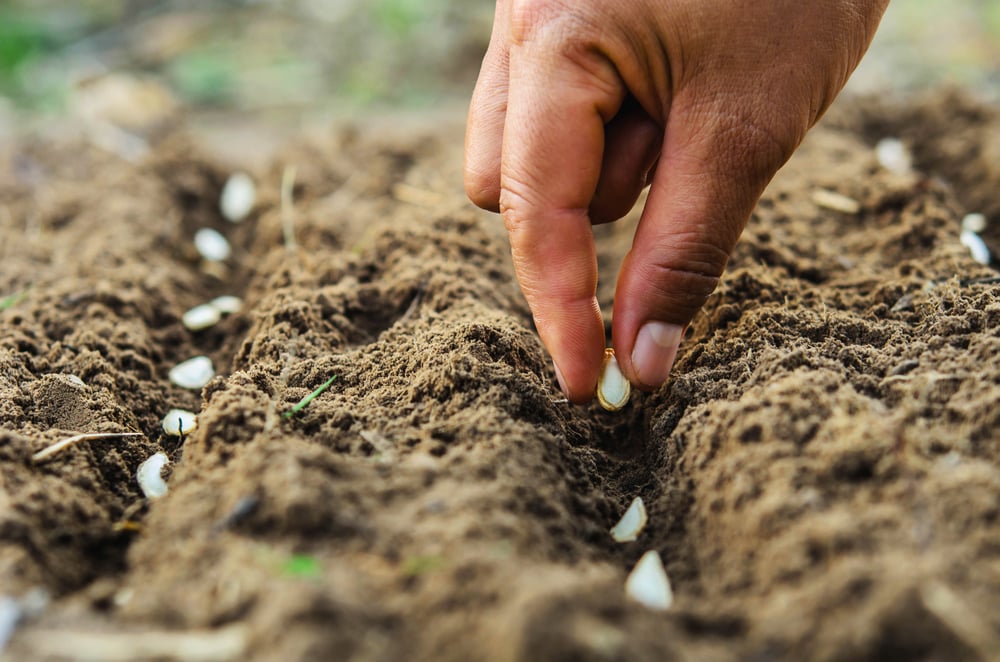
Depending on how you plan on planting fall vegetables you have several options on when to plant your fall vegetable garden.
If you plan on growing your fall vegetables from seed then you should start your seeds about 10-12 weeks before you transplant them into your vegetable garden.
This usually means starting your vegetable seeds sometime in May or June.
If you plan on using plants then you should plant them in late July or early August and they will bloom in early to late fall.
Below is a schedule of when to plant the top 20 best fall garden vegetables
- Lettuce: 4 to 8 weeks before harvest
- Kale: 6 to 8 weeks
- Collard Greens: 6 to 8 weeks
- Arugula: 30 to 40 days
- Spinach: 4 to 8 weeks
- Swiss Chard: 10 weeks
- Broccoli: 8 weeks
- Brussel Sprouts: 100 days
- Cauliflower: 12 weeks
- Kohlrabi: 10 weeks
- Onion: 8 weeks
- Cabbage: 10 weeks
- Turnips: 2 weeks
- Beets: 12 weeks
- Radishes: 4 weeks
- Green Beans: 60 days
- Peas: 90 days
- Sweet Potatoes: 6 months
- Potatoes: 6 months
3. Where Do I Buy Inexpensive Fall Vegetables?
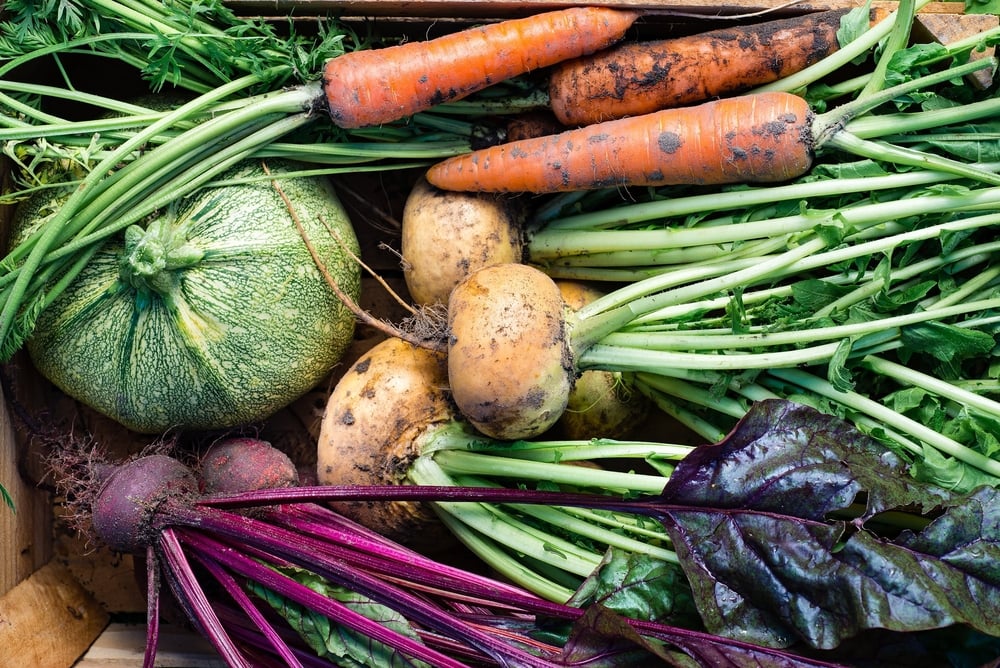
Vegetables can be very expensive to buy every year.
And vegetable seeds can take time and effort to have success and there is still a likelihood that not all of your vegetables with sprout or bloom.
If you are looking to buy inexpensive vegetables or seeds then I recommend Amazon.
This will give you the widest variety of vegetables at the most inexpensive price.
4. What Vegetables Should I Grow in my Vegetable Garden?
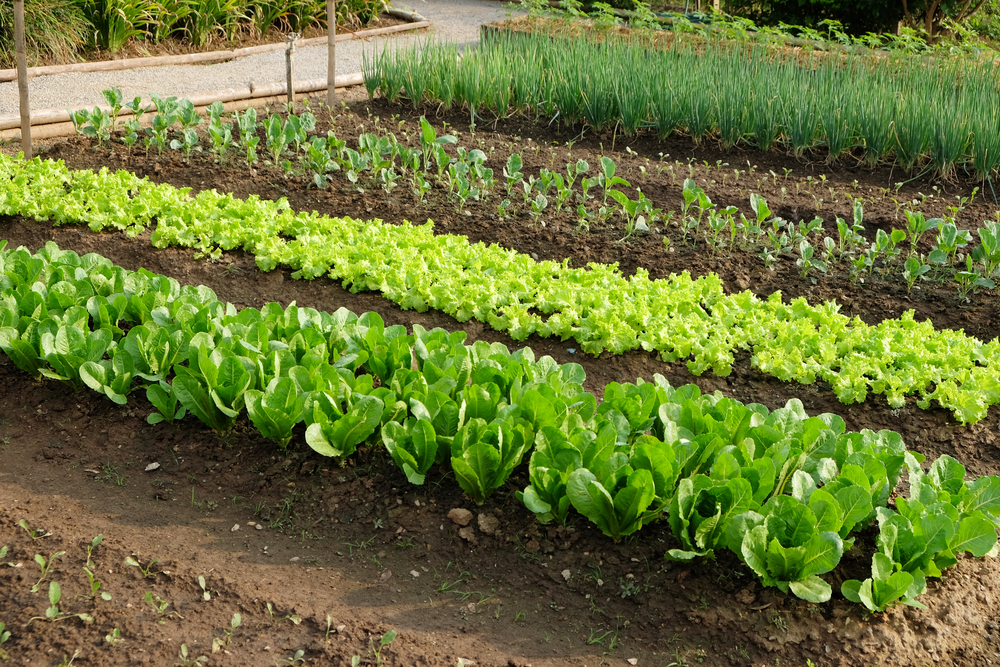
Planting Vegetables is critical to help increase the amount of harvest you have and to help deter pests and disease.
Below, are some vegetables you should plant together:
- Tomatoes, Peppers, Basil
- Onions, Zucchini, Lettuce
- Cucumbers, Radish, Spinach
5. What Type of Garden Design Should I Use?

Garden design is the most complex and most rewarding part of vegetable gardening.
When deciding what you garden design should be there are several factors to consider:
- What Size Vegetable Garden Do You Want
- The Amount of Initial Work and Yearly Maintenance You Want To Do
- What Vegetables You Want to Grow
- How Much Sunlight, Water, and Maintenance will be Required
- What Tools are Needed
- Whether you Want to Grow Your Vegetables in a Traditional Garden, Raised Garden Bed, Hanging Baskets, Garden Containers, or just In You Yard